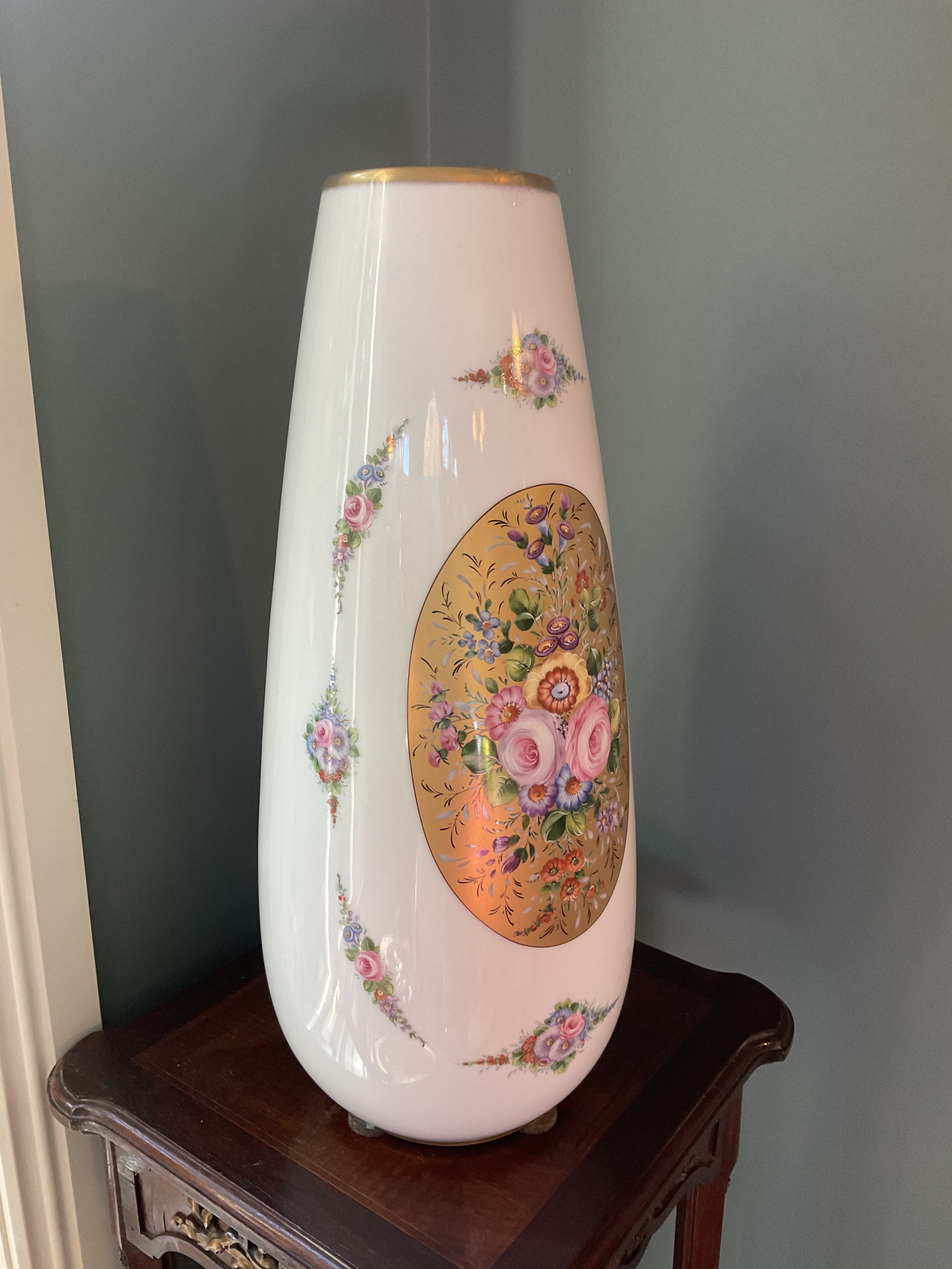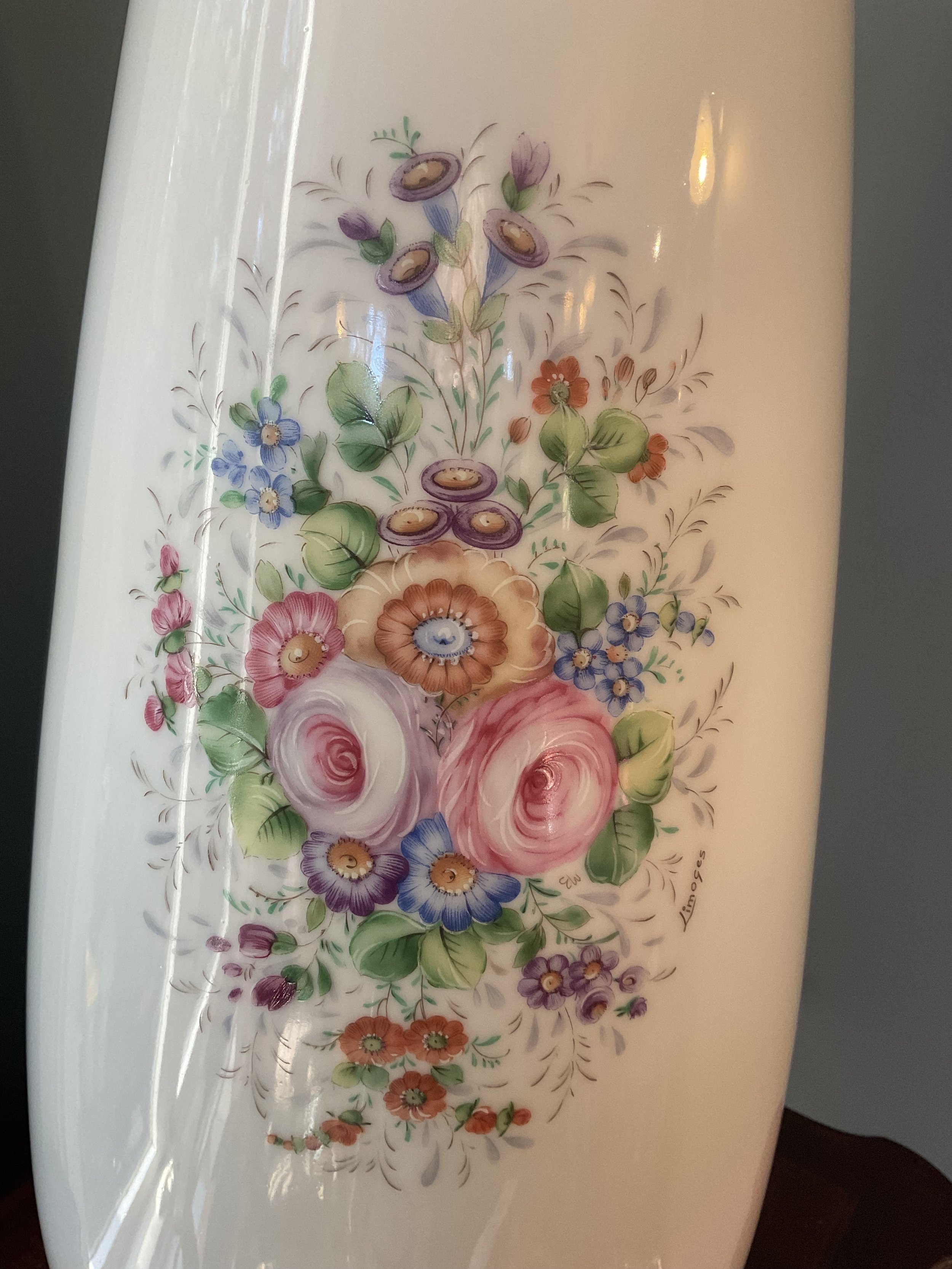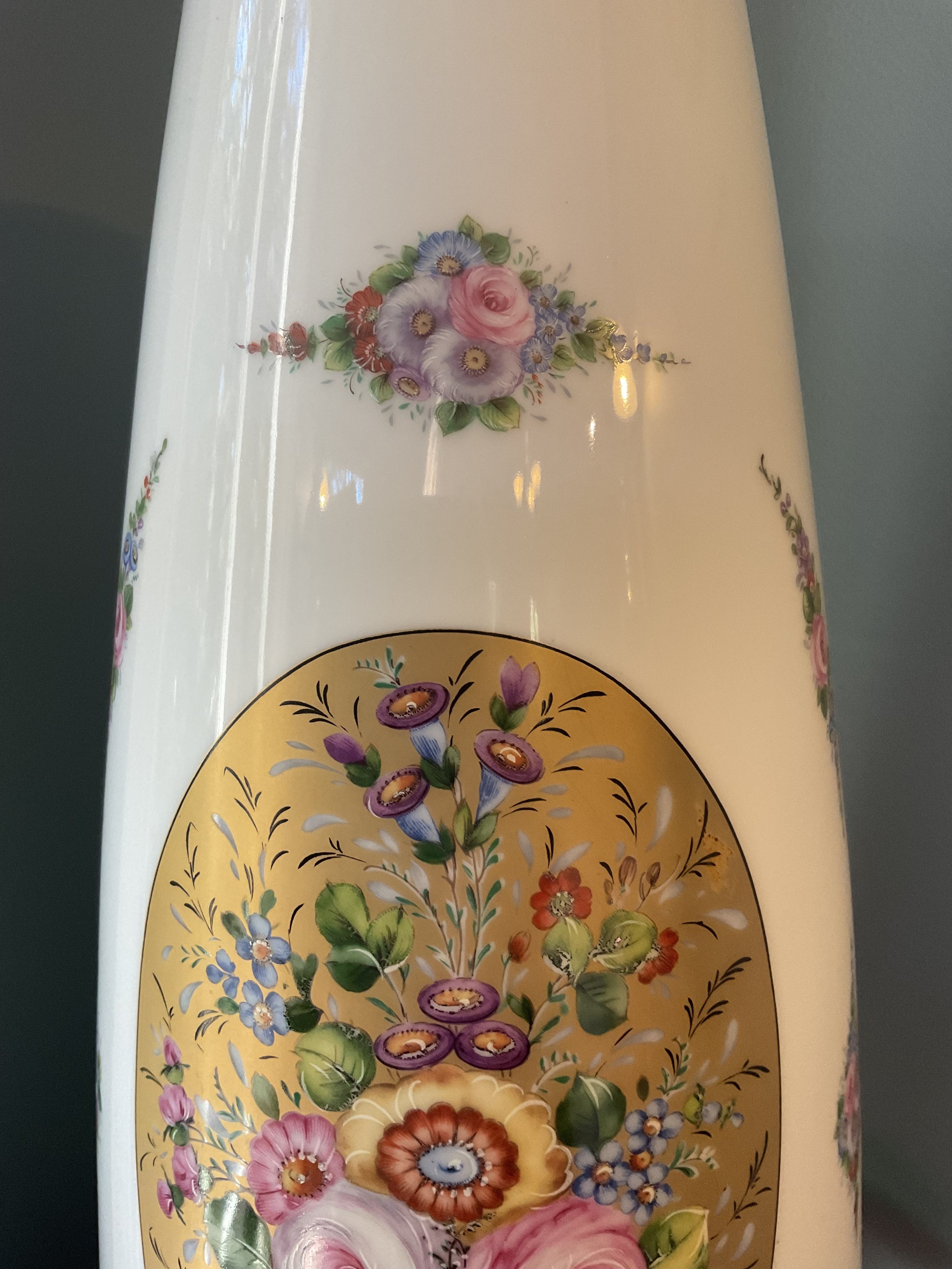Antique Tin Glazed Earthenware Tile
This 18th century tin glazed earthenware tile is decorated with the figure of a foot soldier. Vividly coloured this very old tile has been hand painted. At some stage the top right hand corner has been repaired.
Faience is the French term used to describe tin glazed earthenware. It was predominant in the late 16th century through to the 18th century. For hundreds of years, Europeans had been searching for the secret that would lead to the production of porcelain. Chinese porcelain had been discovered in the Tang Dynasty (618 – 917). The European quest to obtain a white shining product led to the production of faience. Artisans created pieces on a potter’s wheel, a mould or by hand. It was then covered with a vitreous glaze and lead oxide which made it impermeable. The addition of the tin oxide made the glaze become opaque white. Decoration was then painted onto this. Faience was first introduced to Lyon by Italian immigrants in the late 16th century. To determine if a ceramic object is faience, look for a chip. If the ceramic within is brown, then it is faience.
The tile measures 13 cms by 13 cms. It is 1 cm thick. This is a rare opportunity to become custodian of this wonderful piece of history with so many stories to tell.
This 18th century tin glazed earthenware tile is decorated with the figure of a foot soldier. Vividly coloured this very old tile has been hand painted. At some stage the top right hand corner has been repaired.
Faience is the French term used to describe tin glazed earthenware. It was predominant in the late 16th century through to the 18th century. For hundreds of years, Europeans had been searching for the secret that would lead to the production of porcelain. Chinese porcelain had been discovered in the Tang Dynasty (618 – 917). The European quest to obtain a white shining product led to the production of faience. Artisans created pieces on a potter’s wheel, a mould or by hand. It was then covered with a vitreous glaze and lead oxide which made it impermeable. The addition of the tin oxide made the glaze become opaque white. Decoration was then painted onto this. Faience was first introduced to Lyon by Italian immigrants in the late 16th century. To determine if a ceramic object is faience, look for a chip. If the ceramic within is brown, then it is faience.
The tile measures 13 cms by 13 cms. It is 1 cm thick. This is a rare opportunity to become custodian of this wonderful piece of history with so many stories to tell.
This 18th century tin glazed earthenware tile is decorated with the figure of a foot soldier. Vividly coloured this very old tile has been hand painted. At some stage the top right hand corner has been repaired.
Faience is the French term used to describe tin glazed earthenware. It was predominant in the late 16th century through to the 18th century. For hundreds of years, Europeans had been searching for the secret that would lead to the production of porcelain. Chinese porcelain had been discovered in the Tang Dynasty (618 – 917). The European quest to obtain a white shining product led to the production of faience. Artisans created pieces on a potter’s wheel, a mould or by hand. It was then covered with a vitreous glaze and lead oxide which made it impermeable. The addition of the tin oxide made the glaze become opaque white. Decoration was then painted onto this. Faience was first introduced to Lyon by Italian immigrants in the late 16th century. To determine if a ceramic object is faience, look for a chip. If the ceramic within is brown, then it is faience.
The tile measures 13 cms by 13 cms. It is 1 cm thick. This is a rare opportunity to become custodian of this wonderful piece of history with so many stories to tell.


















































